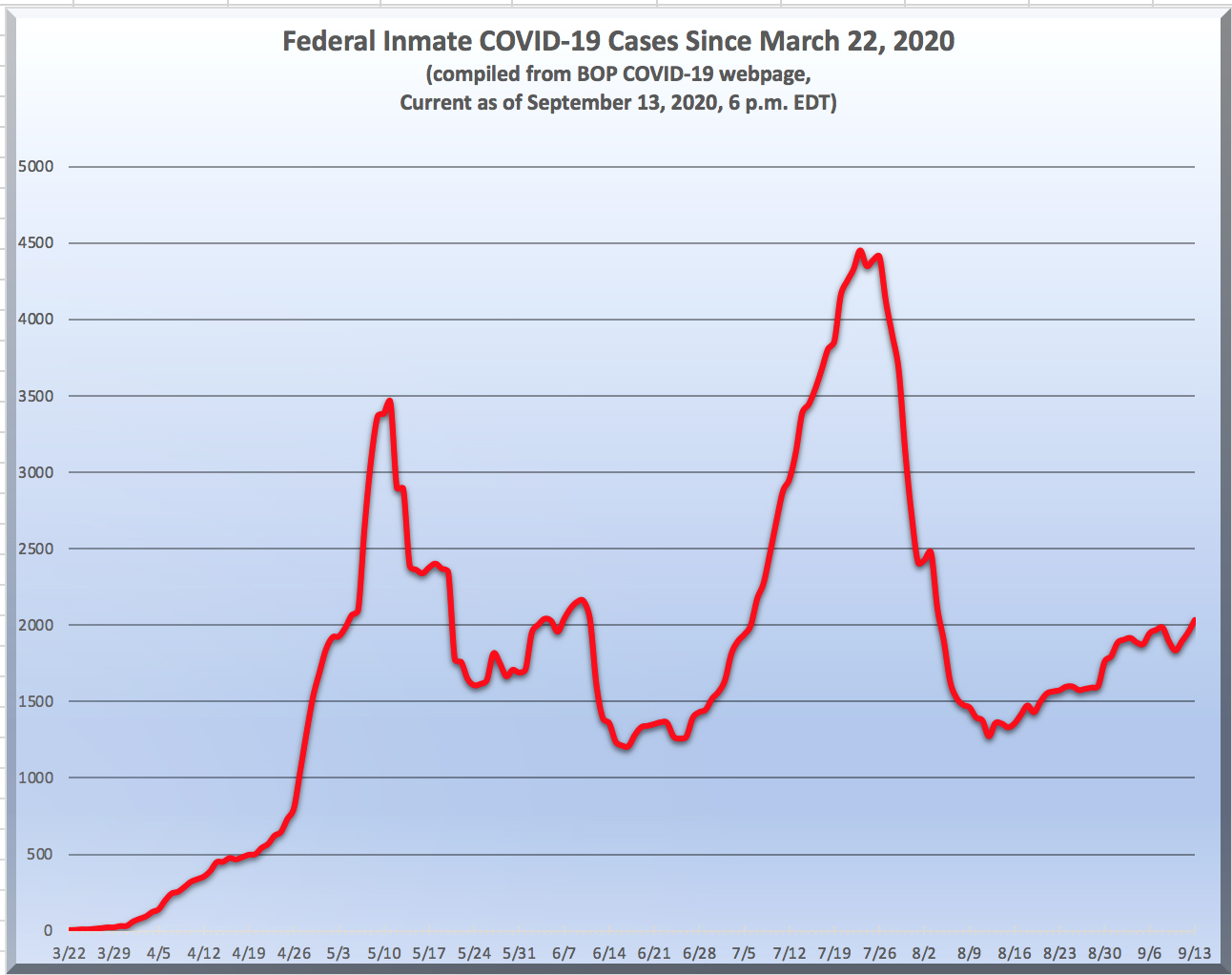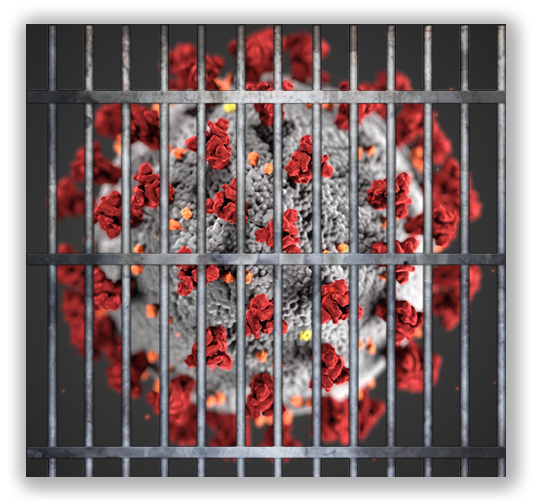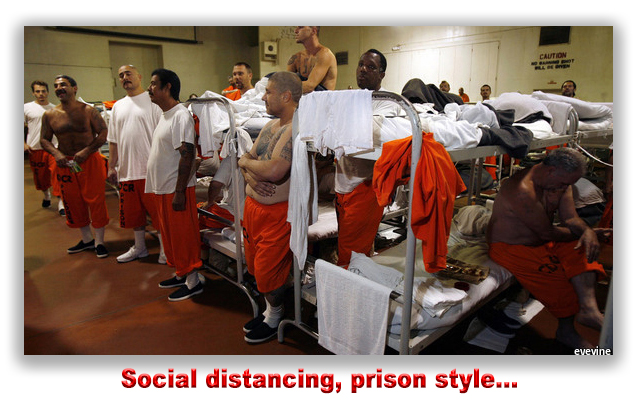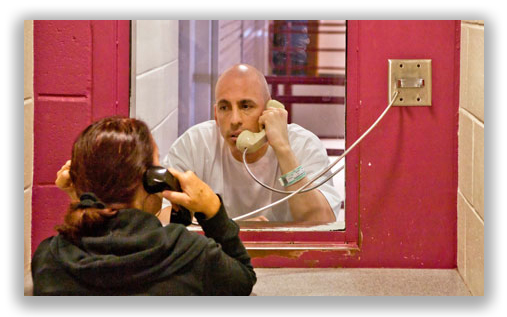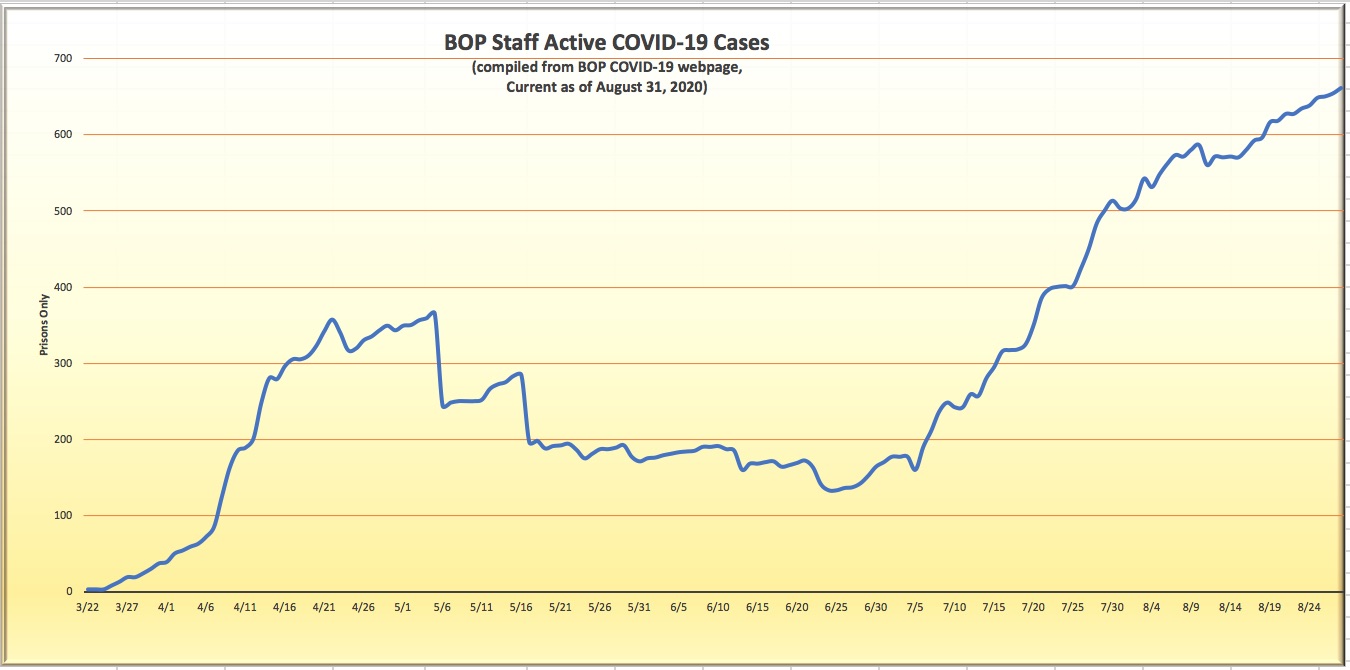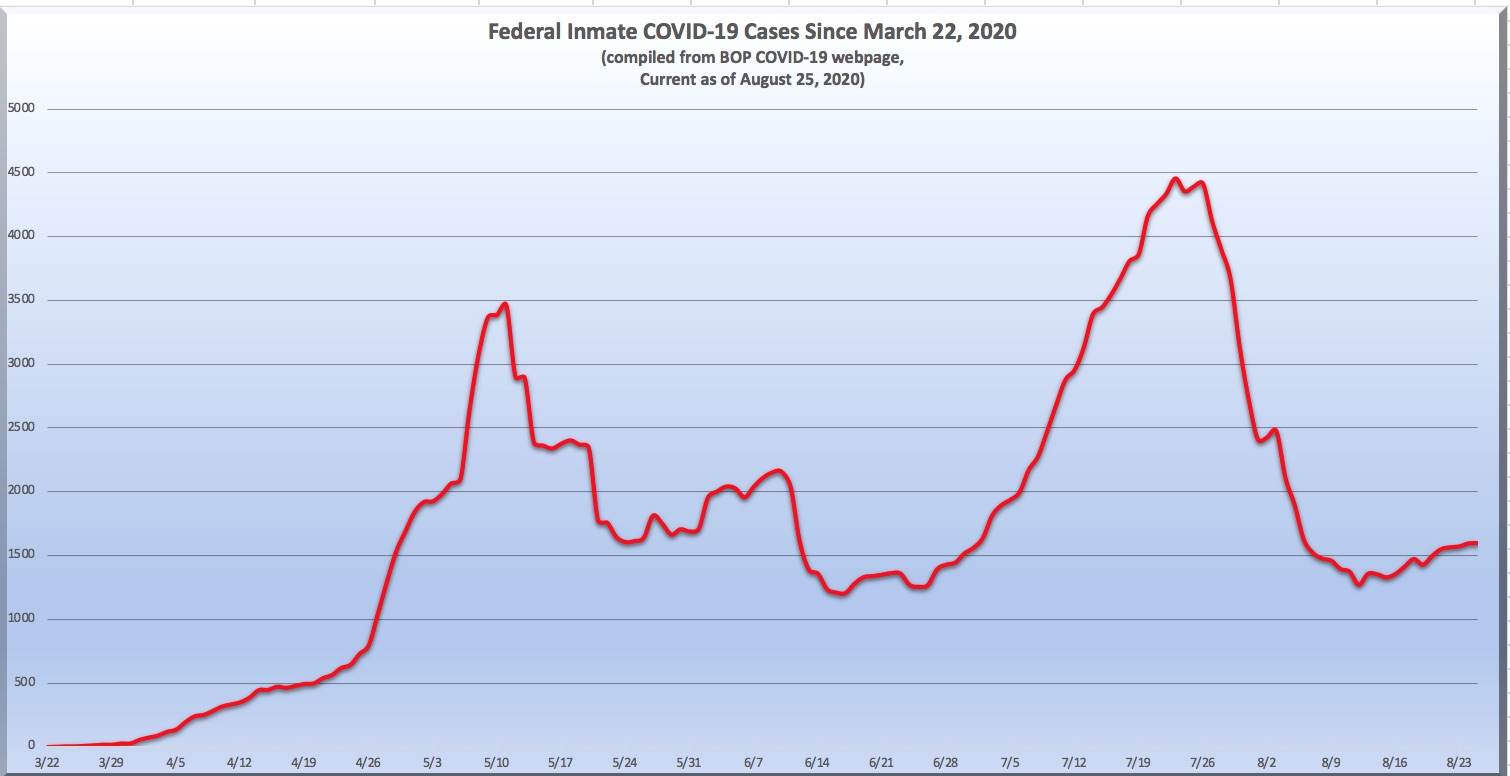We post news and comment on federal criminal justice issues, focused primarily on trial and post-conviction matters, legislative initiatives, and sentencing issues.

HEY, FATSO! YOU’VE GOT COVID-19!
 The Centers for Disease Control and Prevention cranked up its warning about obesity and COVID-19 last week. Last spring, if you had a BMI over 40 (6 feet tall and 295 lbs), you were at risk. At the end of June, that dropped to a BMI of 30+. That made a 6-feet tall guy weighing 221 lbs at risk.
The Centers for Disease Control and Prevention cranked up its warning about obesity and COVID-19 last week. Last spring, if you had a BMI over 40 (6 feet tall and 295 lbs), you were at risk. At the end of June, that dropped to a BMI of 30+. That made a 6-feet tall guy weighing 221 lbs at risk.
Last week, the link between extra pounds and severe Covid-19 grew stronger as the CDC said that people who are merely overweight, not just the obese, may be at high risk of serious disease from the infection. Now, the risk starts with a BMI of 25. Besides the merely overweight (62% of America), smoking has been added to the risk-factor list.
The BOP, which has provided daily COVID-19 numbers since March 2020, dropped weekend reports a few weeks ago. Last Friday, the agency didn’t bother to update its numbers from the day before. Yesterday.s report had 1,745 sick inmates, 736 sick staff, COVID-19 in 119 institutions (98% of all facilities) and 135 inmate deaths.
The latest to die was Robert Pierce, a 52-year old Big Spring inmate, who fell ill September 18 and died last Friday. Meanwhile, the news media reported COVID-19 increases at USP Allenwood, Petersburg Medium, Raybrook and McDowell.
In a pair of letters to Attorney General William P. Barr and BOP Director Michael Carvajal, Senators Elizabeth Warren (D-Massachusetts) and Richard Durbin (D-Illinois) suggest that the agency’s response to coronavirus outbreaks in federal prisons is failing, and they question the BOP’s reliance on solitary confinement to isolate sick prisoners rather than granting compassionate release.
The Washington Post reported last week that “Federal prisoners, corrections staff, government inspectors and civil rights advocates have complained for months that the BOP’s strategies, when useful, are inconsistently applied. The overall inadequate response is leaving a vulnerable population at risk of infection and creating major vectors for transmission more than seven months into the pandemic.”
The BOP’s COVID death toll “is mounting evidence that efforts to contain the virus within BOP facilities are failing,” Durbin Warren wrote to Barr and Carvajal in one of the Oct. 2 letters, which were viewed by The Washington Post.
 The Post previously reported that prison staff have raised concerns about a lack of personal protective equipment and unsafe workplace conditions — issues that have prompted federal employees to sue the government. According to reports by the DOJ Office of the Inspector General on federal corrections facilities nationwide, persistent staffing shortage has triggered regular lockdowns during the pandemic in which prisoners aren’t allowed out of their cells, are often unable to shower and face more restrictions than if they were in solitary confinement.
The Post previously reported that prison staff have raised concerns about a lack of personal protective equipment and unsafe workplace conditions — issues that have prompted federal employees to sue the government. According to reports by the DOJ Office of the Inspector General on federal corrections facilities nationwide, persistent staffing shortage has triggered regular lockdowns during the pandemic in which prisoners aren’t allowed out of their cells, are often unable to shower and face more restrictions than if they were in solitary confinement.
Bloomberg, CDC Expands COVID Risk Warning to Include Overweight People (October 8, 2020)
CDC, People with Certain Medical Conditions (October 6, 2020)
BOP, Inmate Death at FCI Big Spring (October 13, 2020)
Harrisburg Patriot, Another big increase in COVID-19 cases at the Allenwood medium-security prison (October 5, 2020)
Roanoke Times, Inmate at federal prison in Petersburg dies of COVID-19; 21 others are infected (October 7, 2020)
Washington Post, Warren, Durbin slam government’s ‘failing’ efforts to contain coronavirus in federal prisons (October 5, 2020)
– Thomas L. Root



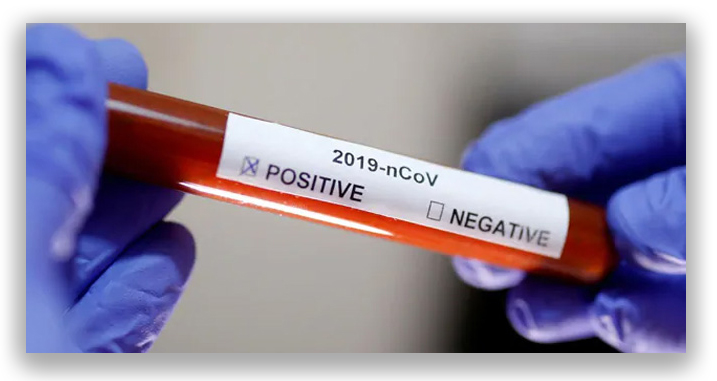





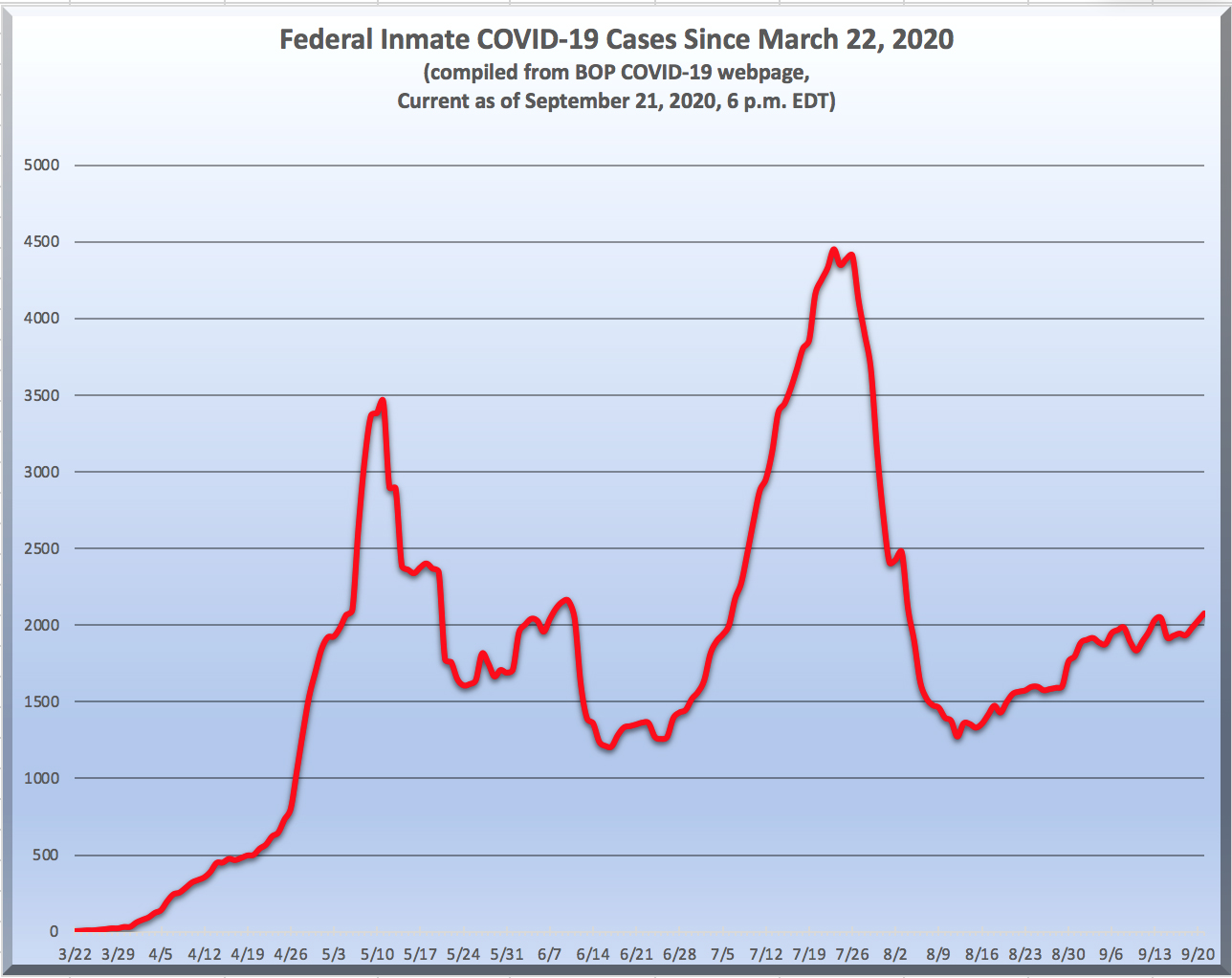

 The theory aligns with researchers’ growing view of the coronavirus as a vascular disease instead of a respiratory one. Research has shown that COVID-19 can lead to blood clots, leaky capillaries, and inflamed blood vessels — which is why some patients may experience heart damage or stroke. “We were really scratching our heads for a while, how does this disease have this darn broad set of symptoms across lots of different organ systems?” Dr. Daniel Jacobson, the lead researcher behind the supercomputer study, told Business Insider. “As we looked at the effects of bradykinin, our model was that this virus can affect several different types of tissues, several different organs.”
The theory aligns with researchers’ growing view of the coronavirus as a vascular disease instead of a respiratory one. Research has shown that COVID-19 can lead to blood clots, leaky capillaries, and inflamed blood vessels — which is why some patients may experience heart damage or stroke. “We were really scratching our heads for a while, how does this disease have this darn broad set of symptoms across lots of different organ systems?” Dr. Daniel Jacobson, the lead researcher behind the supercomputer study, told Business Insider. “As we looked at the effects of bradykinin, our model was that this virus can affect several different types of tissues, several different organs.”
